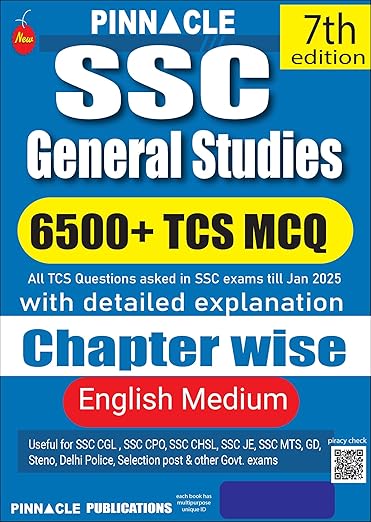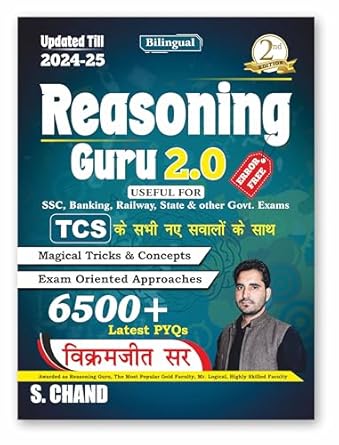TET Syllabus - Principle of Child Development Study Material
The process of development is very wide, complex and continuous; thus some principles need to be followed to understand it. Some of these principles are as under:
- Principle of Continuity: Development follows continuity. It goes form womb to tomb and never ceases. An individual starting his life from a tiny cell develops his body, mind and other aspects of his personality through a continuous stream of development in these various dimensions.
- Principle of Uniform Pattern: The process of development has uniformity and few individual differences. But uniformity is in functions like development of language in children. The physical development is also in a uniform manner. This development starts from head. Thus the milk teeth falls first. Thus the development of similar species have a definite uniformity.
- Principle of Individual Differences: Psychologists give due importance to the principle of individual differences. The process of development has been divided into different age-groups and as every age group has its specific features and have different behavior; these differences cannot be ignored. Even twin-children have differences. Thus every individual has individual differences.
- Principle of Integration: Where it is true that development proceed from general to specific or from whole to parts, it is also seen that specific response or part movements are combined in the later process of learning or development. “Development”, as Kuppuswamy (1971) observes, “thus involves a movement from the whole to the parts and from the parts to the whole”. It is the integration of whole and its part as well as of the specific and general responses that make a child develop satisfactorily in the various dimensions of his growth and development.
- Principle of interrelation: The growth and development in various dimensions like physical, mental, social etc. are inter-related and interdependent. Growth and development in any one dimension affects the growth and development of the child in other dimensions. For example, children with above average intelligence are generally found to possess above average physical and social development. The lack of growth in one dimension diminishes the bright possibility in other dimension. That is why, the child having poor physical development tend to regress in emotional, social and intellectual development.
- Principle of Maturation and Learning: In the process of Growth and development maturation and learning plays an important role. In maturity growth and development get effected towards learning. Any child needs to be mature to do a work. Maturity also has different levels. These levels affect his learning process. For instance if a child is keen to learn something and lacks maturity then he will not be able to learn it.
- Principle of Joint Product of Heredity and Environment: Child growth and development is the joint product of heredity and environment. Various examples have proved this fact. The effect of both of these cannot be separated. Heredity is the foundation of the personality of a child.
- Principle of Total Development: The physical development in human beings is as per time and side-by-side the different aspects of human personality also develops like social, physical, emotional, mental etc. All these aspects are dependent on each other and affect each other. Thus a teacher should take care of all the aspects of a child.
- Principle of Development Direction: Growth and development have their own definite direction. In human body, first of all, head becomes of adult size and legs in end. In the development of embryo, this principle is very clear. Thus development has different directions:1) Caphalo Cadual Sequence: Human child grows from head to legs and not vice versa.
2) Proximo-distal Sequence: This development starts from back have one and then external Promixo-distal sequence starts. Thus we can say that at embryo stage, firstly head develops, then lower portion of the body. Similarly firstly spinal cord develops, then heart, chest etc.
3) Structure Precede Functions: Firstly all the body parts develop then they are used, but before that their muscles should develop. - Development Proceeds From General to Specific Responses: In all phases of child’s development, general activity precedes specific activity. His responses are of a general sort before they become specific. For example, the boy waves his arms in general random movements before he is capable of so specific a responses as reaching. Similarly, when a new born infant cries, the whole of the body is involved. With growth the crying is limited to the Vocal cords, eyes etc. In language development, the child learns general words before specific. He uses the word daddy in greeting many men and it is only afterward that he uses if for his father.
- Principle of Comulation and Recapitulation: Development is net average of experiences and is not based on the experience. Development is also recapitulation that experience are used again and again. For instance the ‘self-love’ in childhood is also present in teenage.
- Principle of Predicability of Development: Research has made it clear that it is possible to predict development. For example, the interests, dislinkings, growth of a child.
- Principle of Outer Control to Inner Control: Small children depend on others for values and principles. When they grow up they develop their own value system, conscious, inner control and outer control.
Thus we see that the knowledge of principle helps us to understand the process of development in a better way. There principles are not ultimate, they are some generalizations which help a teacher to understand direction and help in understanding the level of development among children.
Theories of Development
Baldwin has surveyed the current theories of child development and has concluded that scientific theories are useful to both scientific and laymen in providing ways or thinking about behavior. A theory is intended to provide an explanation for something. A useful theory attempts to explain some unknown phenomenon in terms of concepts with which we are already familiar.
There are three theories of child development, detailed as under
- Field Theory: This theory holds that all parts of the psychological environment influence the individual’s behavior, and it can be compared to field theory in physics which is concerned with electromagnetic fields and how they change. Behavior, it says, is shaped not by simple cause effect chains, but by forces which make up the entire field. Something in the environment may not influence me if I have no idea that it is hostile to me, my behavior may be influenced by this belief, whether or not he actually is hostile. The person separated from his goal acts in order to reach his goal. In other words, there are psychological forces at work on the person that have a certain strength and a certain direction – forces that can be either positive, attracting behavior in a certain direction, or negative, repelling us. The strength of a force toward or away from us is increased or decreased with distance. A cookie easily seen and close to little Td motivates him to take it more readily than if it is in a jar high up on a shelf Little Ken will show more fear of some animal if it is nearby. However, we tend also a react in terms of a total situation which we know well. A person planning to mail a letter does not always head toward the nearest. Mailbox. He may go about his regular business until he comes across a mailbox, at which time this mailbox becomes a positives forces affecting his behavior. As the child grows older, he exhibits a greater variety of behavior. Some activities drop out, but he learns more of a range of emotional expressions and social responses: his needs, expand and his interests and knowledge take on more variation. The space of free movement expands with growth and realism begins to take over. With development we learn the difference between “how things are” and “how we wish they were”.
- Cognitive Theory: Piaget divides the child’s development into four main periods. First is the sensory-motor period of the first two years, where the child is acquiring skills and learning to integrate information from his different senses. He sees the world as a permanent place, not one whose existence depends upon his perceiving it. He can experiment with things about him deliberately vary his action. But the child gets into trouble in this first stage because of a lack of understanding corresponding to his behavior. Following the period of infancy, the years of two to seven build a conceptual scheme, which becomes organized and properational. During this period, the child oversimplifies his thinking. For the four-year-old, when the red light on the stove goes out, dinner is ready. His understandings are often not logical, yet in free play he may be most sensible. From two to four the child is egocentric, unable to see the point of view of others; from four to seven he sees things in better relationship and is able to put them into categories (boys, animals, friends).
Form seven to eleven comes the third period, that of concrete operations, where the child organizes things well and thought processes are stable and reasonable. He can arrange objects in order of size and fit new ones into the series. He understands that the number of objects in a group is not changed by purely spatial rearrangement. He has acquired a conception of time, space, number and logic; but he cannot yet grasp concept’s like volume.
The fourth period that of formal operations, comes in early adolescene. At this point the child can understand the basic principles of causal thinking and scientific experimentation. He has a fundamental grasp of logical thought.
- Stimulus- Response Theory: The basic elements of a stimulus- response theory include the assumption that most human behavior is learned, and that this is done piecemeal rather than all at once. When two different stimuli appear together repeatedly, the responses to one of them are gradually transferred to the other. If a response to a stimulus ins followed by reinforcement, this reward increases the probability of the response to that stimulus. Over time the person builds up habits of behaving and of thinking. Stimulus-response theory also contains a frustration-aggression hypothesis which says, in effect, that the stronger the frustration, the more likely the aggression; the greater the interference with a frustrated response, the stronger the instigation to aggression.
Stimulus-response theory also relates to social learning. The child is dependent, and hence we have the beginnings of socialization where there is a gradual taming of aggression into a socially acceptable form. Individuals grow up differently depending upon their Particular experiences : some city-bred children may be surprised to find that real sheep do not have wheels.
Factors Affecting Growth and Development
- Heredity
- Gender
- Diseases & Injuries
- Nutrition
- Intelligence (I.Q)
- Family situation
- Emotions
- Healthy living Environment
- Culture
Educational Process of Different Developmental Stages
Infancy Period:
- Fast Development
- Depending of Parents
- Self-Assertion
- Selfish and Unsocial
- Emotionally Unstable
- Development of Rote Memory
- Fast Learning Process
- Copying Tendency
- Time Concept not Developed
- Development of Curiosity
- Development of Imagination
- Playing Habits
- Tendency of Repeating
- Lack of Morality
- Feelings of Self-Attachment
- Basic Instincts as basis of Behaviour
Education in Infancy:
- Presenting good examples
- Education starts with births
- Education through activities
- Don’t give wrong notion to child about his merit
- Learning of social etiquette
- Care about dress, food and sleeping habits
- Child’s mind very active
- Precautions regarding praise and punishment
- No shift in responsibility
- Importance of mother tongue
- Aesthetic sense
- Children are critic of parents
- Friends
- Curiosity
Childhood :
- Slow physical Growth
- Physical Activities
- Power of Questioning and Answering
- Understanding and Thinking Power
- Mental Stability
- Complete Development of Audio and Visuals Senses
- Increase in Vocabulary
- Development of Interests
- Change in Social Behaviour
- Development of Construction Instinct
- Love for Exploring and Wandering
- Sex Instinct
- Formation of Concept of Right and Wrong
- Development of Morality
- Imagination and Memory
- Sincere for Friends
- Feelings of Bravery, Self-Exhibition and Leadership
- Separation of Male-Females
- Interest in Acting and Collection
- Some other Characteristics
Education in Childhood :
- Be careful about the Behavior of Children
- Development of tendencies
- Teaching of social sciences
- Mental exercise
- Development of writing power
- Co-curricular activities
- More participation
- Selection of subjects
- Teaching methods
- Interesting subject-matter
- Development of attributes
- Opportunities for expressing emotions
- Teacher and Ideals
Aspects or Area of Development
At each stage, development takes place in various areas simultaneously. Development in these areas during different stages is discussed under the following aspects.
- Physical : Physical development is about the physique i.e. their height and weight.
- Motor : Motor development is about the musucular development and their co-ordination.
- Cognitive : Congnitive development is about mental growth and intellectual development.
- Language : Language development is about the way children learn the language, the age at which they acquire different components of language.
- Personality Development : It is about the total development of a personality.
- Emotional : Emotional development is about different emotions at various stages and how they grow over a period of time.
- Moral : It deals with what is right and what is wrong at the age at which this knowledge is acquired and with the rules of punishment and justice. Development of conscience and values also come under the realm of moral development.
- Vocational : It deals with the choices about career and who they develop and are pursued in life.




very good explanation of the development
BETTER
nice